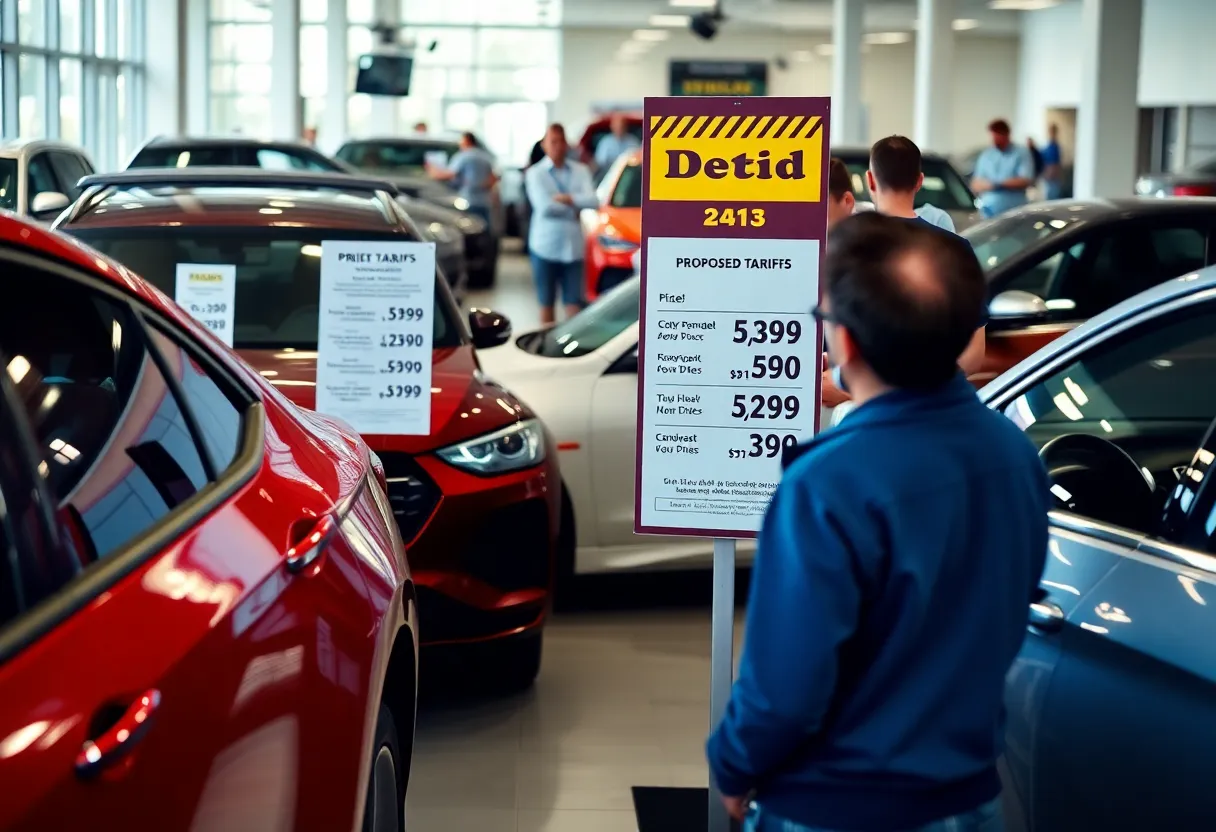

Concerns over rising car prices due to proposed tariffs loom over buyers.
Want to target the right audience? Sponsor our site and choose your specific industry to connect with a relevant audience.
Prominent brand mentions across targeted, industry-focused articles
High-visibility placements that speak directly to an engaged local audience
Guaranteed coverage that maximizes exposure and reinforces your brand presence
Interested in seeing what sponsored content looks like on our platform?
May’s Roofing & Contracting
Forwal Construction
NSC Clips
Real Internet Sales
Suited
Florida4Golf
Click the button below to sponsor our articles:
Sponsor Our ArticlesThe Trump administration’s proposed 25% tariffs on auto imports could significantly increase vehicle costs, warns economist Arthur Laffer. Buyers might see price hikes of $4,711 per car as tariffs take effect on April 3, 2025. While the USMCA exemption offers some relief, concerns about competitiveness and consumer choices loom. With prices for new cars predicted to rise substantially, consumers may turn to used vehicles, causing potential market imbalances. This proposal has sparked debate within the automotive industry, as supporters and dissenters voice their opinions on its implications.
The automotive world is buzzing with news surrounding the proposed 25% tariffs on auto imports championed by the Trump administration. Recent analysis from esteemed economist Arthur Laffer raises some serious concerns. This 21-page report warns that these tariffs could lead to a staggering increase in vehicle costs—by as much as $4,711 per car!
So, what does this mean for folks in the market for a new vehicle? Well, if these tariffs come into effect on April 3, 2025, buyers might find that shiny new car or truck carries a much heftier price tag. Laffer suggests that while the aim of the tariffs may be to boost the domestic auto industry, they could instead hurt it significantly. This is because the proposed taxes may hinder U.S. manufacturers from competing effectively with their international counterparts.
There’s a little silver lining, though! The White House has rolled out a temporary exemption under the USMCA (U.S.-Mexico-Canada Agreement) for auto parts and imports that will help soften the blow of the tariffs. If preserved, it’s estimated that the average cost per vehicle could drop to about $2,765, sparking a sigh of relief for consumers.
One of Laffer’s main arguments is that maintaining the supply chain principles outlined in the USMCA would work wonders for the industry. The entangled web of U.S., Canadian, and Mexican manufacturing means that any increase in tariffs could lead to significant hiccups. Automakers struggling to source parts might find themselves facing serious challenges, potentially leading to inflated prices across the board.
While Trump believes that these tariffs will encourage both domestic and foreign automakers to invest and create jobs in the U.S., many experts see potential pitfalls. Automotive analysts are predicting that prices for new cars could rise by anywhere from $5,000 to $10,000. That’s quite a leap for most households looking to buy a vehicle!
With these anticipated price hikes for new vehicles, many consumers may start turning towards the used car market. That shift could create a supply-and-demand imbalance that further escalates prices for used cars, leaving buyers in a tricky situation.
The United Auto Workers union has come out in favor of the tariffs, claiming they will help restore and enhance the auto industry and create better job opportunities. However, there’s a strong counter-narrative from international manufacturers who argue that these tariffs could negatively affect competitiveness and reduce the options available to consumers.
Overall, Laffer’s analysis serves as a cautionary tale that could impact U.S. auto manufacturing in unforeseen ways. It seems that while the intent behind tariffs can be well-meaning, the execution could lead to what he calls “irreparable damage.” As April 2025 approaches, it will be interesting to see how these proposed tariffs and the associated exemptions affect both consumers and the industry as a whole.
In conclusion, buyers might want to keep their eyes peeled and their wallets ready, as the upcoming changes could affect not just the price tags of new vehicles, but the landscape of the U.S. automotive market itself!
News Summary In Cape May County, Jewish Family Service (JFS) is responding to growing community…
News Summary The SEOST Digital Marketing Conference in Chandler, Arizona, will take place from May…
News Summary Generative AI is gaining traction among Americans, with two-thirds having used it at…
News Summary In 2025, the social media environment is shifting towards authenticity, with consumers demanding…
News Summary Social media is evolving into a dynamic marketplace, with predictions of social commerce…
News Summary Porsche AG announces significant leadership changes set to take effect by 2025. Matthias…